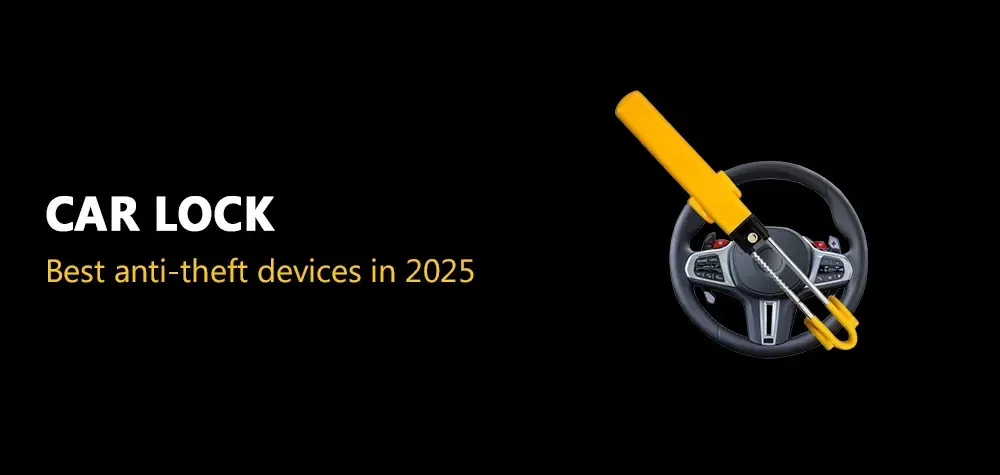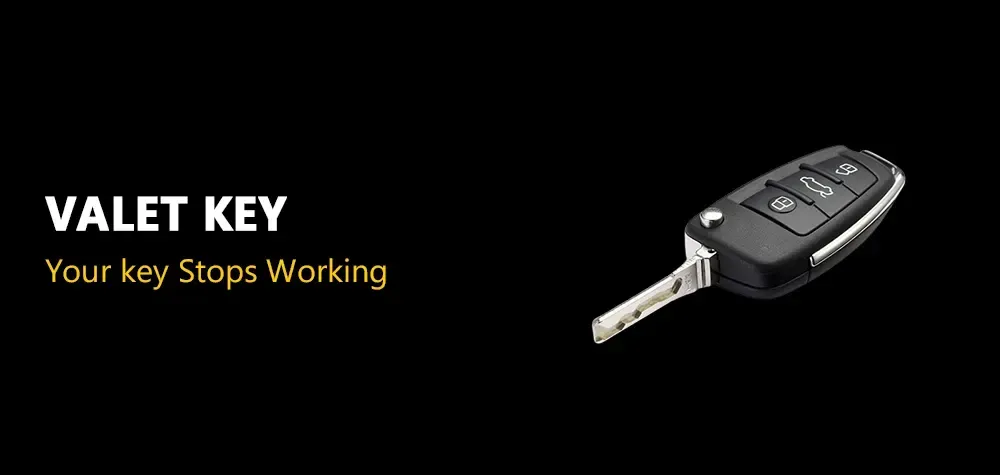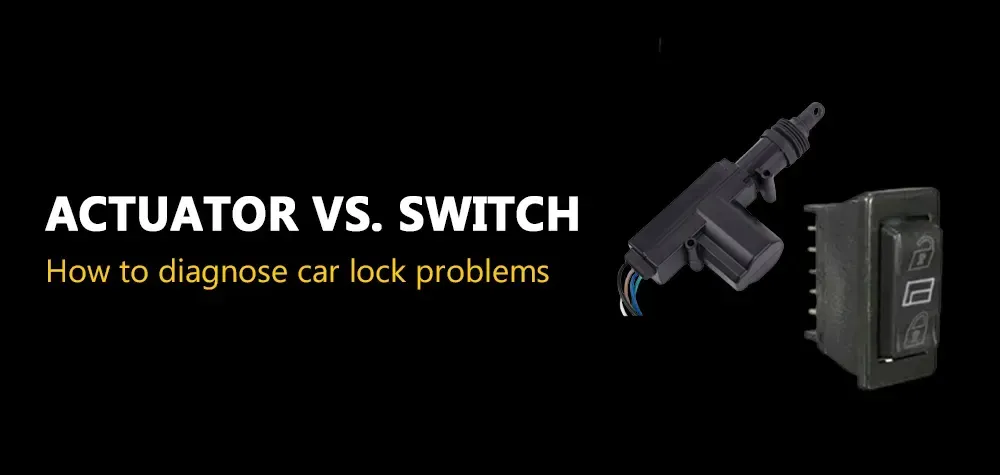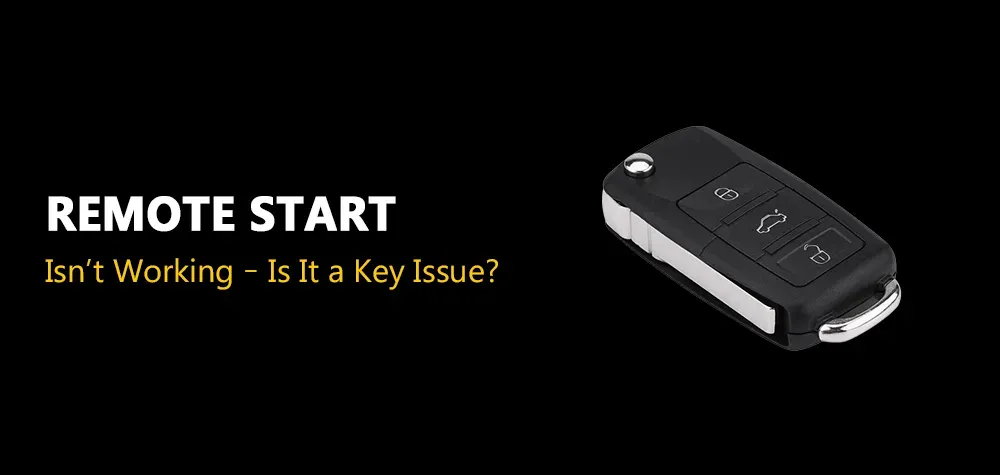Key Won't go in Ignition
Key won't go in ignition
As automotive experts, we understand the frustration and inconvenience that arises when your key refuses to slide smoothly into the ignition. It's a scenario that can quickly turn a routine start-up into a perplexing puzzle, leaving you feeling stranded and helpless. But fear not, for in this comprehensive guide, we're here to shed light on this common issue and provide you with the knowledge and tools to tackle it head-on.
Read more about How to get a car key made without the original!
Picture this: you're ready to hit the road, keys in hand, anticipation building as you approach your vehicle. Yet, as you attempt to insert the key into the ignition, it meets resistance, stubbornly refusing to engage. It's a scenario that can test even the most patient of drivers, prompting questions of why and how this could happen.
In this blog post, we'll delve into the intricacies of why your key won't go into the ignition, unraveling the mystery behind this frustrating predicament. From understanding the potential causes to exploring troubleshooting steps and possible solutions, we'll equip you with the insights and strategies needed to overcome this obstacle and get back on the road with confidence. So buckle up, dear readers, as we embark on this journey to unlock the secrets of your stubborn ignition.
Potential Causes for the Key Not Fitting into the Ignition:
- Key Damage: One of the most common reasons for the key not fitting into the ignition is damage to the key itself. Wear and tear over time can cause the key's teeth to become worn or bent, making it difficult to insert into the ignition cylinder properly.
- Ignition Cylinder Issues: The ignition cylinder, where the key is inserted, may also be the source of the problem. Internal components within the cylinder, such as tumblers or springs, can become damaged or misaligned, preventing the key from fitting correctly.
- Debris or Obstructions: Dirt, dust, or debris buildup within the ignition cylinder or keyhole can obstruct the key's path, making it challenging to insert smoothly. Additionally, foreign objects lodged in the keyhole, such as small rocks or paper debris, can also prevent the key from fitting properly.
Signs and Symptoms Indicating Ignition Problems:
Read more about Why your car key isn't working!
- Difficulty Inserting Key: The key may encounter resistance or feel tight when attempting to insert it into the ignition cylinder. It may require excessive force or jiggling to try and fit the key into place.
- Key Won't Turn: Even if the key manages to fit into the ignition, it may refuse to turn, preventing the vehicle from starting. This could indicate issues with the ignition cylinder or internal components.
- Key Gets Stuck: After successfully starting the vehicle, the key may become stuck in the ignition cylinder and refuse to turn back to the off position. This can be alarming and may require professional assistance to resolve.
- Ignition Switch Failure: In some cases, the ignition switch itself may be faulty, leading to intermittent starting problems or complete failure to start the vehicle.
Troubleshooting Steps
A. Inspecting the Key for Damage or Deformation:
- Examine the key closely for any signs of damage, such as bent or worn teeth.
- Check for any deformities or irregularities that may affect its ability to fit into the ignition properly.
- If visible damage is detected, consider using a spare key or seeking assistance from a locksmith to create a replacement.
B. Checking for Debris or Foreign Objects Obstructing the Ignition:
- Use a flashlight to inspect the keyhole and surrounding area for any debris, dirt, or foreign objects.
- Carefully remove any visible obstructions using compressed air, a soft brush, or tweezers.
- Ensure that the keyhole is clean and free of any debris before attempting to insert the key again.
Read more about What to do when key won't turn in lock?
C. Assessing the Condition of the Ignition Cylinder and Keyhole:
- Insert the key into the ignition cylinder and observe any resistance or difficulty in insertion.
- Wiggle the key gently while attempting to turn it to assess the smoothness of movement.
- If the key encounters resistance or feels tight, carefully inspect the ignition cylinder and keyhole for signs of damage or misalignment.
- Look for any visible wear, corrosion, or irregularities that may indicate underlying issues with the ignition system.
- If necessary, consider lubricating the ignition cylinder and keyhole with a suitable lubricant to improve functionality.
Possible Solutions
A. Lubricating the Ignition Cylinder and Keyhole:
- Apply a small amount of graphite-based or silicone-based lubricant to the key and insert it into the ignition cylinder.
- Turn the key back and forth several times to distribute the lubricant evenly throughout the cylinder and keyhole.
- Lubrication can help reduce friction and smooth out the operation of the ignition, making it easier for the key to fit and turn smoothly.
B. Using Spare Keys to Test for Consistent Issues:
- If you have spare keys available, test them to see if they encounter the same problem when inserted into the ignition.
- Testing multiple keys can help determine if the issue lies with a specific key or if it is a broader problem with the ignition cylinder.
- If spare keys also have difficulty fitting into the ignition, it may indicate underlying issues with the ignition system that require further investigation.
C. Seeking Professional Assistance Brothers Locksmith:
- If troubleshooting steps fail to resolve the issue, or if you suspect significant damage or malfunction within the ignition system, it's advisable to seek professional assistance.
- Automotive locksmiths, such as Brothers Locksmith, specialize in diagnosing and repairing issues with vehicle locks and ignition systems.
- A qualified locksmith can assess the condition of the ignition, identify any underlying problems, and perform necessary repairs or replacements to restore proper functionality.
- By entrusting the job to a reputable automotive locksmith, you can ensure that the issue is addressed effectively and that your vehicle's security is maintained.
Preventive Measures
A. Regular Maintenance of the Ignition System:
- Schedule periodic inspections of the ignition system as part of routine vehicle maintenance.
- Check for signs of wear, corrosion, or damage to the ignition cylinder and keyhole.
- Lubricate the ignition cylinder and keyhole as needed to prevent friction and ensure smooth operation.
- Address any issues or abnormalities promptly to prevent them from escalating into more significant problems.
B. Keeping Keys Clean and Free of Debris:
- Avoid placing keys in dirty or dusty environments that can lead to debris buildup.
- Clean keys regularly using a soft cloth or brush to remove dirt, dust, and other contaminants.
- Store keys in a clean and dry location to prevent corrosion and damage.
- Consider using key covers or protective cases to shield keys from dirt and debris while not in use.
C. Avoiding Forcing the Key into the Ignition to Prevent Damage:
- Never apply excessive force or pressure when inserting the key into the ignition cylinder.
- If the key encounters resistance or does not fit smoothly, avoid attempting to force it further.
- Instead, troubleshoot the issue using gentle manipulation and lubrication techniques to resolve the problem safely.
- Forcing the key into the ignition can damage both the key and the ignition cylinder, leading to costly repairs or replacements.
Conclusion
A. Importance of Addressing Ignition Key Issues Promptly:
- Ignition key issues can disrupt the normal operation of your vehicle and compromise its security.
- Promptly addressing these issues can prevent inconvenience, potential vehicle damage, and safety hazards.
- Ignition problems left unattended may escalate into more significant issues, leading to costly repairs or replacements.
Seek Professional Help from Brothers Locksmith if Troubleshooting Efforts Fail:
- If DIY troubleshooting methods fail to resolve the ignition key issue, it's crucial to seek professional assistance.
- Automotive locksmiths like Brothers Locksmith have the expertise, experience, and specialized tools to diagnose and repair ignition problems effectively.
- By entrusting the job to professionals, you can ensure proper resolution of the issue and avoid further damage to your vehicle.
C. Tips for Maintaining a Functional Ignition System for Reliable Vehicle Operation:
- Regularly inspect and maintain your vehicle's ignition system as part of routine maintenance.
- Keep keys clean, dry, and free of debris to prevent issues with insertion and operation.
- Avoid applying excessive force or pressure when inserting keys into the ignition to prevent damage.
- Follow manufacturer recommendations for key and ignition system care to prolong their lifespan and ensure reliable vehicle operation.
Call Us Any Time!









